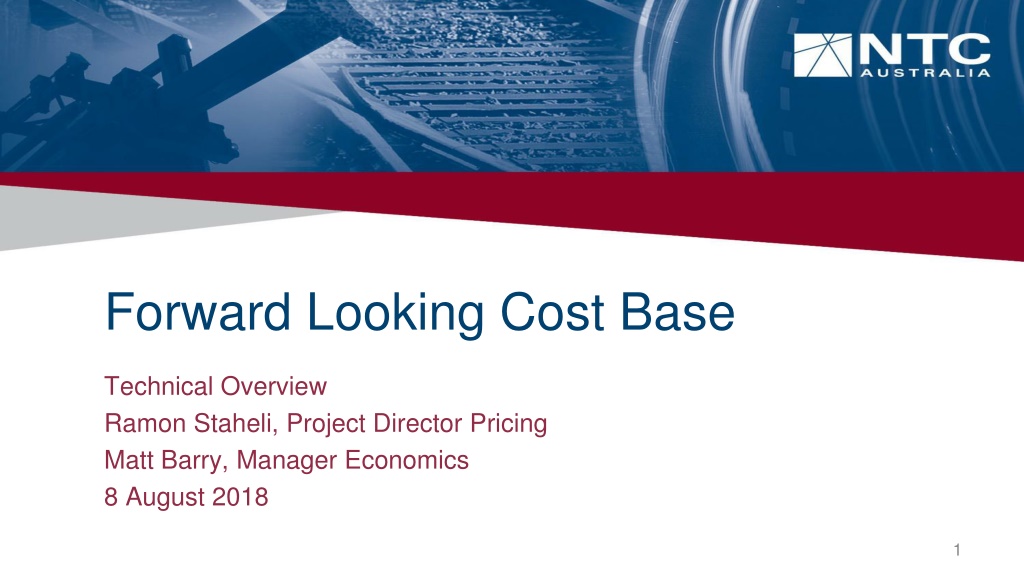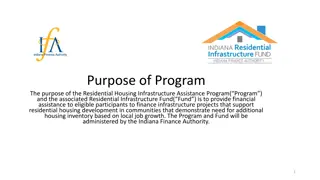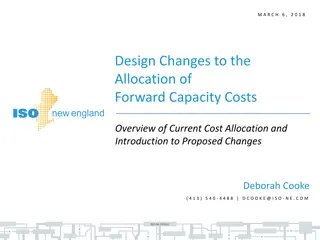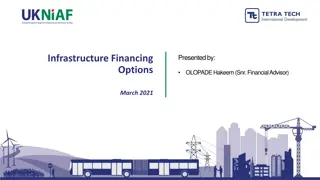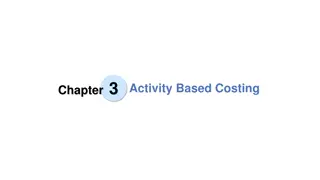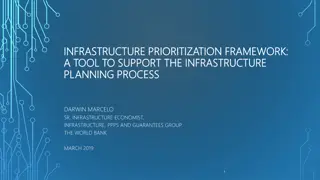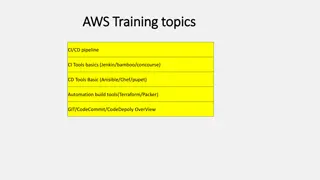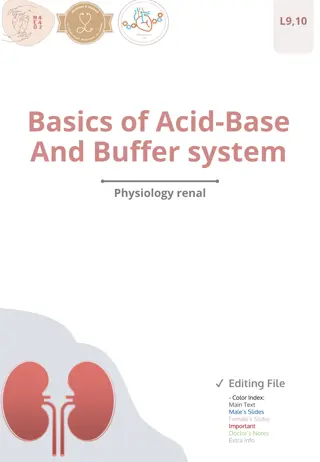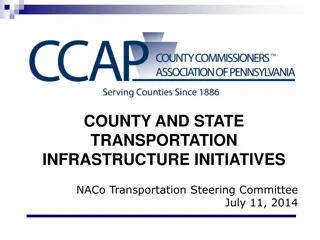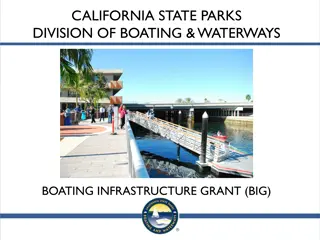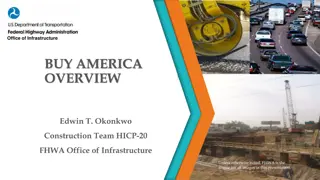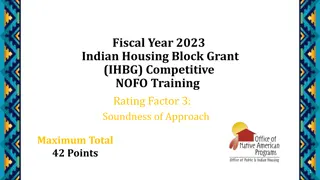Understanding Forward Looking Cost Base in Infrastructure Projects
Forward Looking Cost Base (FLCB) is a financial tool that helps in spreading lumpy capital expenditure over time to ensure revenue stability. It consists of key components like return of assets, return on assets, and operating expenditure. The model relies on actual expenditure, forecasts, and asset data to calculate depreciation. FLCB is crucial for achieving financial sustainability and requires clear policy decisions for implementation.
Download Presentation

Please find below an Image/Link to download the presentation.
The content on the website is provided AS IS for your information and personal use only. It may not be sold, licensed, or shared on other websites without obtaining consent from the author. Download presentation by click this link. If you encounter any issues during the download, it is possible that the publisher has removed the file from their server.
E N D
Presentation Transcript
Forward Looking Cost Base Technical Overview Ramon Staheli, Project Director Pricing Matt Barry, Manager Economics 8 August 2018 1
Contents What is a forward looking cost base How does it work Advantages and disadvantages Use and experience in other sectors 2
What is a forward looking cost base It is a tool to spread lumpy capital expenditure over time Infrastructure related expenditure tends to be lumpy, but we want revenue (charges) to be smooth over time A fundamental criterion for financial sustainability is that the net present value of expenditure and revenue is the same the FLCB can help us achieve this Outcomes produced by the model depend heavily on policy decisions outside the model, e.g. rate of return on capital 3
Components of the FLCB The key output of the FLCB is a revenue requirement This consists of three building blocks Return of assets (depreciation) Return on assets Operating expenditure 4
Information requirements Model uses actual expenditure and forecasts in a range of common opex and capex categories Information on asset lives needed for each asset category to calculate depreciation For prototype model, road agencies populated a template, effectively translating organisation-specific data into a common format More complex than reporting historical expenditure under PAYGO 5
Single Asset Example Initial Cost of Asset Depreciation Asset Life Replacement Date Commissioning Date Start / End of Regulatory Period 6
Building Blocks Approach - Stylised Opex Revenue Require ment Year 1 Return on Capital WACC Commissi oned assets Year 1 Depreci ation Opening RAB Year 1 Opening RAB Year 2 7
Policy settings required The FLCB prototype model is consistent with longer term reform considerations under LTMR It could be used by an independent price regulator as outlined in the consultation RIS A number of policy decisions need to be agreed before it could be used the current prototype uses placeholder assumptions to function Further work would be required, both within and outside of the FLCB model for more sophisticated calculations as may be required under possible future reform scenarios (including public consultation) 8
Revenue Determined . ..in the short to mid term by . .in the mid to longer term by . The green triangles are determined by the desired outcomes of the line in the sand approach that is, the desired transitional revenue path from the status quo to a FLCB. The transition period: A longer transition will see a slower depreciation rate (shifting the bottom green arrow down) The initial RAB will be calculated backwards to achieve the desired initial revenue requirement and transition path. The blue triangles indicate the building blocks over time driven by future expenditure. Once the opening RAB is depreciated out, this would directly determine the building blocks. The following policy elements will effect the blue triangles: Cost of capital rate: An increasewill steepen the top blue arrow, increasing the return on capital. Asset lives: Shorter asset lives will result in a steeper depreciation curve. This will be partly(?) offset by a lower cost of capital (the relative gap between the top and middle arrow will narrow) Cost allocation: Any change to the cost allocation approach that increased HV cost base would see a higher opex and steeper blue arrows. Return on capital Depreciation Revenue Requirement initial year Opex Transition years Policy Decisions Made .line-in-the-sand drawn after . .WACC and cost allocation agreed 9
Advantages and disadvantages Flexibility the model is very flexible about how costs are spread over time Better intergenerational equity assets paid for as they are consumed rather than up-front Smoother revenue requirement over time Better for users as charges would be less volatile Better for road managers as revenue less volatile this could lead to better long-term maintenance plans and/or contracting efficiencies Has the potential to more closely align expenditure and revenue over time compared to backward looking approaches Stability over time dependent on stability of policy settings Slightly more complex than PAYGO from a modelling perspective 10
Experience in other sectors The building blocks model is used in the regulation of other network industries such as telecommunications, gas and electricity in Australia Important difference is that full economic regulation exists in these industries this has a strong influence on processes, timelines and costs Would expect application under the reform explored in the Consultation RIS to be significantly less complex and costly due to the proposed nature of the independent price regulator 11
The National Transport Commission leads regulatory and operational reform nationally to meet the needs of transport users and the broader community for safe, efficient and sustainable land transport. Keep in touch with the latest NTC news by registering to receive our free e-newsletter and alerts at www.ntc.gov.au 12
